by Dr. Tom Lombardo
Renewable Energy for Self-Sufficiency
Ask a few homeowners about renewable energy and they’ll probably talk about solar panels and rooftop wind turbines. They might even use the term “off-grid.” In reality, there are many more possibilities, each with its own advantages and disadvantages. Let’s start with a brief overview of renewable energy on a residential scale. Each topic below is worthy of a thorough discussion, which I’ll provide in future articles. So let’s take a look at renewable energy for self-reliance.
You may also be interested in reading Energy Conservation at Home Part 1 and Energy Conservation at Home Part 2
This post contains affiliate and referral links and advertising as a means to earn income. You won’t pay any extra but I may earn a small commission on qualifying purchases. As an Amazon affiliate, I may earn a commission on qualifying purchases. See my disclosures.
Why Renewable Energy?
While you may think your energy bills are high, the US has some of the lowest energy rates in the world. That means a renewable energy system won’t pay for itself right away – it could take anywhere from three to fifteen years to recoup the cost, depending on where you live. Using ballpark estimates, a solar photovoltaic system would take about seven years to pay for itself if your electric rate is 12 cents per kilowatt-hour, the current national average. That, of course, assumes that electric rates won’t increase. It’s likely that they will, and the cost of solar is decreasing, both of which shorten the payback period and add value to your investment.
Of course, reducing your carbon footprint and being self-sufficient are noble causes by themselves, so even if it’s not the best short-term financial decision, you may decide to do it simply because it’s good karma. In effect, you’re casting your “economic vote,” which carries more weight than you might think!

Hey! You! Get Off of My Grid!
(Apologies to The Rolling Stones…)
Living off the grid is easier said than done, especially when it comes to renewable energy. When it’s not windy, your turbines won’t generate energy. Solar panels generate nothing at night and very little when it’s cloudy. No problem – generate more than you need during the day and store the rest in batteries!
While that’s technically feasible, it can be somewhat expensive, although the cost has been dropping significantly over the past few years. If you have access to grid power, it’s less costly to have a grid-tied renewable energy system that uses net metering for “virtual storage.” On the other hand, battery storage could provide a good backup power option in the event of a power failure, and it frees you from the power grid. Whole-house lithium-ion battery systems are widely available, relatively affordable, and highly reliable.
A Watt Saved is a Watt Generated
Before you consider investing in energy production, make sure to reduce your energy consumption. Energy efficiency is much cheaper than generating energy and it has a quicker payback period. Here are simple things you can do:
- Replace your incandescent or CFL lights with LED bulbs
- Replace old appliances with new energy-efficient models
- Invest $30 or so in a programmable thermostat (and actually USE it!)
- Replace CRT or plasma TVs with LCD or LED models – not only are they more efficient, they look better too!
- Be sure your house is properly insulated and doesn’t have air leaks
- Turn off, or unplug, electrical devices that aren’t being used
While it’s possible to do your own electric load analysis, a complete energy audit – one that examines your heating, cooling, ventilation, and insulation systems – is normally done by a professional because it involves specialized, and often expensive, equipment. The good news is that you can get a federal tax credit (USA) for energy efficiency upgrades and renewable energy systems, which will defray the costs of hiring professionals when necessary.
More about energy efficiency:
Energy Conservation at Home Part 1 (Electrical)
Energy Conservation at Home Part 2 (heating and cooling)
Once you’ve made sure that you’re using energy efficiently, you can then start thinking about ways to generate the energy that you need. There’s no single answer to which technology is best; they all depend on your local conditions.

Passive Solar
Passive solar involves capturing the sun’s heat and light and moving it directly to where you need it. South-facing windows can gather warmth from the low winter sun, and a large overhang will block the high summer sun to keep you cool in the summer. Smart placement of trees can help too. If you have a south-facing wall that doesn’t have many windows, you might consider installing a passive solar heating system. I’ve seen off-the-shelf models for a few hundred dollars and I’ve also seen some DIY versions that work well too, even in cold climates.
Windows and skylights let in a lot of light, but they’re poor insulators – even the super-efficient ones. (They’re “super-efficient” compared to other windows, but they’re nowhere near as good as an insulated wall or ceiling.) However, light tubes can bring in a lot of sunlight with a small opening, which reduces heat loss.
Passive solar is one of the oldest heating/cooling/lighting technologies. In some climates, that’s all you need; in others, it can greatly reduce your energy bills. While some techniques lend themselves best to new construction, others can be retrofitted to an existing house.
Read more about passive solar here.

Solar Electricity
Generating electricity from sunlight is more practical than you might think. Germany is one of the world leaders in solar power production, and it gets less sunlight than the northern United States. Before designing a solar power system, you’ll want to do a site assessment. Among other things, a site assessment looks for a spot that has unshaded access to the sun all year round, with no obstructions during the peak sun hours (9 AM to 3 PM). Photovoltaic (PV) panels can be mounted on your roof or on the ground. There are even shingles that have PV cells built into them.
In 2022, a PV system cost about $2.50 per watt, including installation. It’s even less when you factor in the federal tax credits for residential solar systems. A typical house may require a 4 kilowatt (4000 watts) system to meet all of its electrical needs but if you’re grid-tied, you can start with a small system now, to lower your energy bills, and add to it later. Prices are dropping!
By the way, I’ve heard some people say that it takes more energy to manufacture a solar panel than the panel will produce in its entire lifetime. That was true … fifty years ago! Today’s solar panels have about a two-year energy payback period, which means that it takes two years for the panel to produce the same amount of energy that went into manufacturing it. Solar panels come with 25-year warranties and continue producing energy well into their forties and beyond! And I’ll admit that the manufacturing process isn’t as “green” as I’d like, but it’s still more eco-friendly than drilling, refining, transporting, and burning petroleum. Also, engineers are developing ways to make solar panels out of more Earth-friendly materials and with cleaner processes. They’re also finding ways to recycle used solar panels.
If you’re considering solar electricity, here’s an article with more information about the process.
Solar Water Heating

A solar water heater can serve all of your water heating needs all year long if you live in a warm climate. For those of us in temperate zones, a solar water heater does the job in the summer, but can also pre-heat water in the winter so your gas or electric water heater doesn’t have to work as hard. Solar water heating is one of the quickest returns on investment. The biggest downside is that you have to run plumbing to the roof.
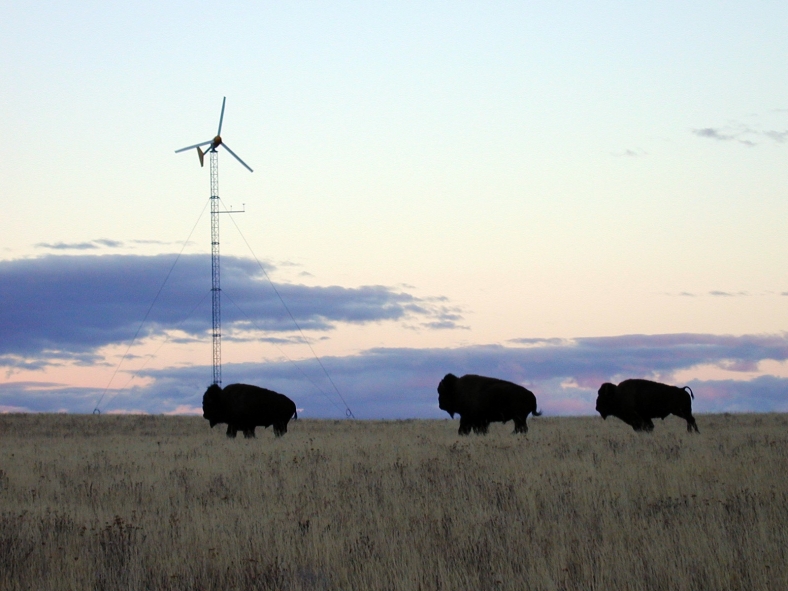
Wind Power
I’m a big fan (no pun intended) of wind power … on a utility-scale. For residential sites, not so much. Wind power is great, but it requires steady, strong winds, and you only see those at very high altitudes in open fields. Those little rooftop wind turbines may promise high energy production, but look carefully at the wind speeds required – you’ll never see those wind speeds sustained on your rooftop. We have a neighbor with a rooftop turbine; even on windy days it hardly spins. On my way to work I pass by a house that has a wind turbine – looks like a 1 kW model – on a 30-foot tower next to the house. The tower is too short and too close to the house. The turbine almost never spins.
If you want to see a detailed analysis of small wind turbines and their energy production, check out my article on Engineering.com.
By the way, don’t be afraid of wind turbines or wind farms. There’s no scientific evidence that they cause harm to people. And while birds do occasionally run into them, birds also run into buildings. Many more birds are killed by domestic cats than by colliding with wind turbines. Pollution and oil spills are far worse for wildlife than any form of renewable energy!
Hydroelectric Power
If you happen to have a stream on your property, you might be able to take advantage of a micro-hydro power system. But to make good use of it, you need a large volume of water falling from a significant height. Your shallow stream might look like it’s flowing fast, but like a small breeze in your backyard, there’s not a lot of usable energy in it.
Heating with Wood
Wood is a renewable resource and it’s carbon-neutral. As trees grow, they remove CO2 from the atmosphere. When they die and decay, they gradually release that accumulated CO2. Burning wood simply releases it more quickly.
If you have a traditional heating system like a furnace, consider a wood-burning stove as a supplemental source of heat and a backup in case the power fails. (Gas furnaces require electricity too.) We bought a wood stove a few years ago and it keeps our home nice and toasty for much less than the cost of electricity to run our heat pump.
More to Come!
As I said at the beginning of this post, I’ll give a thorough coverage of each of these items in future articles. I also write about renewable energy at ENGINEERING.com, so if you’re interested in the technology, please check out my articles. There’s some cool stuff happening in renewable energy!

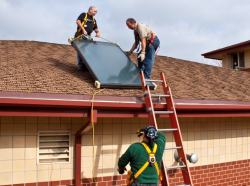


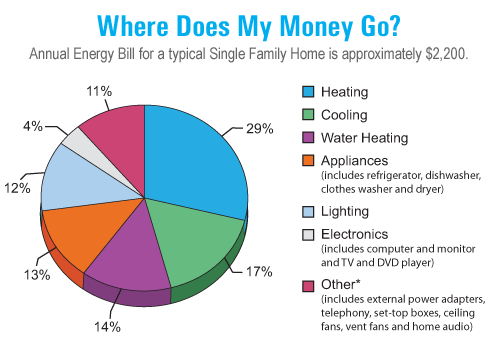
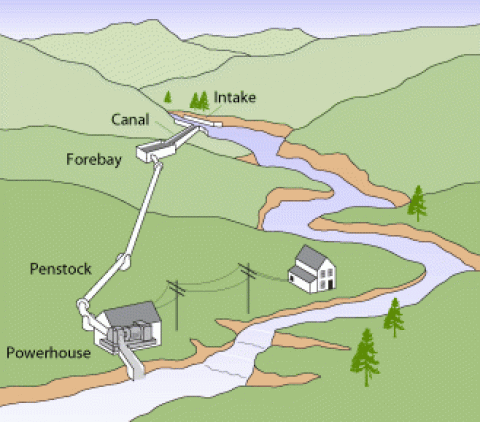

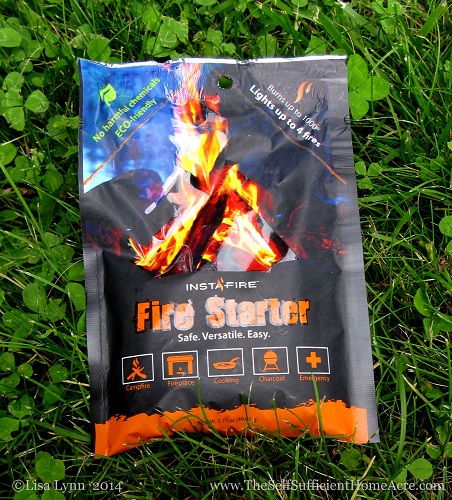
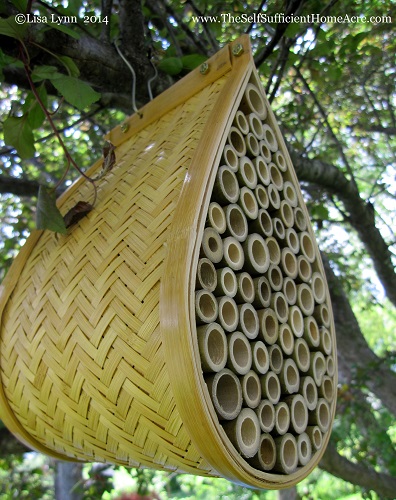

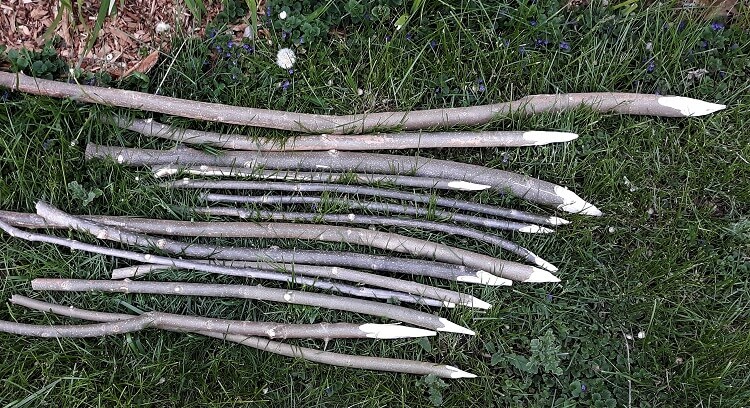
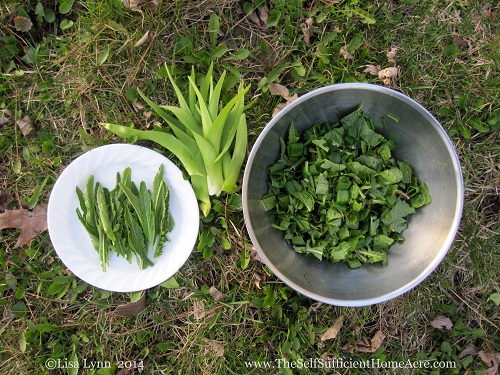

Thanks! Very helpful.
Hello, We are considering purchase of an “off the grid” 1650 SF home in the Rocky Mountains. We would be near a community on the grid (2 miles) and surrounded by other off grid homes. It’s a photovoltaic system with wind turbine as a supplement. How should we go about determining if it is sufficient to live normally? Like, can I use my sewing machine at night, etc. we’ve heard from some that we can’t use a microwave or hair dryer, etc. I’m concerned but really like the house and location. Any suggestions? Thanks! Lyn
Hi Lyn,
Let me see if my engineer hubby has read your comment and can help you figure that out. 🙂 It’s definitely not my area of expertise!
Have you ever considered getting a treddle (sp?) sewing machine? If we go off grid, I know that there will be a lot of gadgets that will have to go. Like the blender, bread machine, etc. We’ll need to do more things the old fashioned way.
Hi Lyn,
The answer to your question depends on your definition of “live normally.” If you want to use any amount of power at any time, then off-grid will probably be unappealing and/or expensive. (At a minimum, it may require a backup generator. More on that later.)
The first thing to do is look at a couple of years’ worth of electric bills. Find out your total electricity use [it’s measured in kilowatt-hours (kWh)] for the year and divide by 365 to see kWh per day. That’s your average daily electricity use.
If you don’t have your electric bills, then you can calculate it the long way. Look at all of your appliances to determine how much power they use. (Power is measured in Watts.) Then multiply that power by the number of hours that they’re used every day. This gives you watt-hours. Divide by 1000 and you get kWh.
(Watts x Hours) / 1000 = kWh
You mentioned microwave and hairdryer. These use a lot of power, but usually for short amounts of time.
For example, a microwave might use 1500 watts. If you use it for 15 minutes each day:
(1500 watts X 1/4 hour) / 1000 = 0.375 kWh per day
A 60 watt light bulb that’s used for 6 hours a day:
(60 watts x 6 hours) / 1000 = 0.36 kWh per day
So even though the microwave uses much more power, it’s on for a short amount of time, so it uses just a little more energy than the light bulb. (Of course, if you replace that 60 watt bulb with an efficient LED bulb you’ll save a lot of energy! See the Energy Conservation links in this article for more.)
Once you know your average daily energy use, you’ll need to find out how much electricity your solar array can generate. (I’m assuming the wind turbine provides very little. Click the link in the Wind Power section above to see why.)
Find the array size (in kilowatts). Then go to https://pvwatts.nrel.gov and use their tool for calculating how much energy it will produce. Just enter your zip code and the array size, and accept all the default values for everything else. When it shows you total kWh per year, compare that to your annual energy usage. Energy generated should be at least 20% more than the energy you use.
When the array generates more power than you’re using, the excess energy is stored in batteries. We usually design a battery bank to hold about 6 days worth of energy, to account for cloudy days when the PV isn’t generating as much, and to prevent the batteries from being drained down to zero. A battery bank’s capacity is also measured in kWh. So the battery bank’s size should be about 6x your daily energy use.
Because a battery bank that size is so expensive, most off-grid homes have a backup generator that runs on propane or natural gas. In that case you can use as much power as you want – when you exceed the PV and battery capacity, the generator will power up.
Good luck!
Tom
We are hoping to build a super energy efficient home soon and plan to integrate passive solar design. I would love to be able to incorporate solar panels too . . . I’m in Ohio and wonder how effective solar hot water systems work in a cold climate like ours?
Solar water heaters work in cold climates too, but depending on size, they may not do the job completely. At a minimum, they can pre-heat water so your gas/electric water heater doesn’t have to do as much. A large enough solar water heating system, however, can meet all of your water heating needs, even in Ohio.
Another possibility is to use a traditional electric water heater and power it with photovoltaic panels. This is less efficient, because PV panels only convert about 20% of the sun’s energy into electricity, but it’s less expensive since you don’t have to run plumbing to your roof.
I’ll explore both options in a future article dedicated to solar water heating.
I love this post, it’s so informative. I especially appreciate dispelling myths about solar panels. I’m a big fan of passive solar energy and we used many of those principles when building our home several years ago & as a result our monthly electric bill is shockingly low. With the lowering costs of solar energy these days we’re hoping to have a grid-tie system in the future since I dislike the battery storage option. THANKS for sharing your knowledge, I’ll be sure to watch for future posts.
~Taylor-Made Ranch~
Wolfe City, Texas
Thanks for your comments, Taylor-Made! When we build our “retirement” home, we’ll be incorporating many passive and active solar principles.
We live in South Carolina with a lot of sun and are thinking of starting the switch over with a solar water heater. We also have a south facing wall where we are hoping to install a passive solar heating system. We are not sure which to do first?
Tracy, I think I’d go with the solar water heater first. You use hot water all year, but in SC I doubt you use the heat all that much. On the other hand, the passive solar heating system on the south wall wouldn’t be very expensive, so maybe you can do both.
There are many renewable sources like wind energy,solar energy and biomass energy.Amnoug that biomass energy is most important because briquetting machine throgh we can convert loose biomass and waste into solid fuel which is eco friendly and does not make pollution when it burns.
Good morning, Lisa Lynn. Great article! When we build our off-grid house we plan to use wood heat with a masonry heater – some call it a russian stove. It heats more efficiently for longer periods of time with just one wood load, and burns less wood than a conventional wood stove. The big plus? You can build it with an oven insert. So, not only are you heating your home – you can cook your meals also! There are several blogs out there showing their step-by step building of their masonry heaters and they are fascinating. I think we have decided to use the “double bell” design for ours.
Also – we will be using both solar and wind for our electrical usage with battery storage. Yes, it is more expensive in the beginning, but if the cost of electricity goes up astronomically, we will never have to worry about that because ours will already be paid for! The usage of solar and wind in tandem usually makes sense. When the sun is out, everything is fine and dandy. But when the sun doesn’t shine, it is usually because of a storm, when there is usually wind present! We are also considering using “earth tubes” for cooling in the summer.